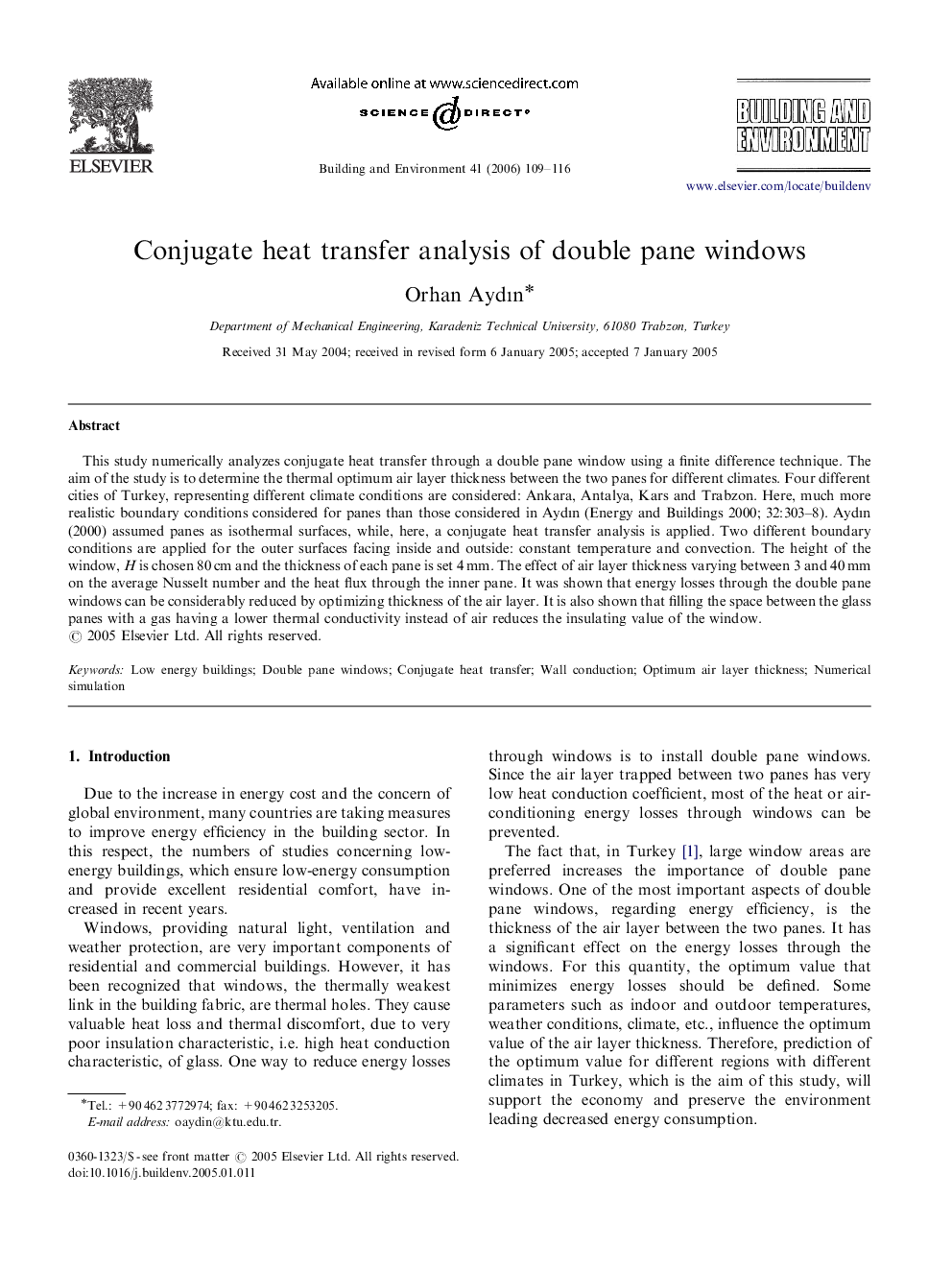| کد مقاله | کد نشریه | سال انتشار | مقاله انگلیسی | نسخه تمام متن |
|---|---|---|---|---|
| 250439 | 502671 | 2006 | 8 صفحه PDF | دانلود رایگان |

This study numerically analyzes conjugate heat transfer through a double pane window using a finite difference technique. The aim of the study is to determine the thermal optimum air layer thickness between the two panes for different climates. Four different cities of Turkey, representing different climate conditions are considered: Ankara, Antalya, Kars and Trabzon. Here, much more realistic boundary conditions considered for panes than those considered in Aydın (Energy and Buildings 2000; 32:303–8). Aydın (2000) assumed panes as isothermal surfaces, while, here, a conjugate heat transfer analysis is applied. Two different boundary conditions are applied for the outer surfaces facing inside and outside: constant temperature and convection. The height of the window, H is chosen 80 cm and the thickness of each pane is set 4 mm. The effect of air layer thickness varying between 3 and 40 mm on the average Nusselt number and the heat flux through the inner pane. It was shown that energy losses through the double pane windows can be considerably reduced by optimizing thickness of the air layer. It is also shown that filling the space between the glass panes with a gas having a lower thermal conductivity instead of air reduces the insulating value of the window.
Journal: Building and Environment - Volume 41, Issue 2, February 2006, Pages 109–116